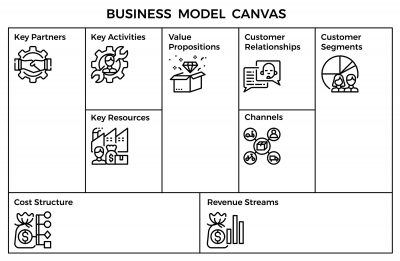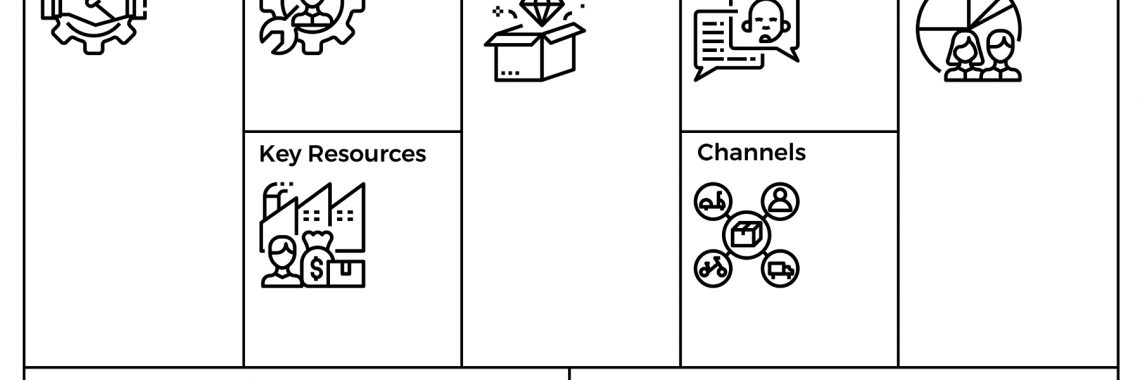Now is a great time to take a look at the past year and consider what is working well in your operation.
You can also examine areas of opportunity where you might be able to reduce risk, improve production, streamline efficiencies, and enter potential untapped markets. Consider changes in existing markets, commodity pricing changes, and changes in customer needs and desires.
Maybe this is the time to alter your business plan or begin formalizing one if you haven’t yet taken that step.
Often, business owners prepare a business plan prior to visiting a lender or investor, but the plan is really for you and creates a roadmap for your specific business model. It is a living document that can be changed and revised as you test the feasibility of a market idea, secure funding, and provide a strategy for success.
Before digging into a formal business plan, consider a concept called the Business Model Canvas, a visual tool with nine informational blocks to help with visualizing and structuring that business plan. It’s a brainstorming tool developed by Alex Osterwalder and Yves Pigneur. The canvas can be found at www.strategyzer.com/canvas/business-model-canvas.

Begin by drawing the canvas on a whiteboard or a big sheet of craft paper and then bring out the sticky notes and markers for recording ideas. Use the canvas to reflect and identify key components of your idea, both for startups and expansions—or a change in market.
The Wyoming Small Business Development Center Network (SBDC Network) has found this planning tool also helps your existing business as an ongoing strategic planning tool. You will also be able to see all of the components of the model at once making it easier to create a more formal business plan.
So, how does it work, and how can it be tailored to your operation?
Think of this canvas as a right brain/left brain concept, to develop the relationships with your creative mind (right brain) and then move to the analytical side (left brain) to accomplish the details.
Some of the key concepts found in the right brain realm of this canvas are:
- Customer Segments—Define the different groups of people or organizations you aim to reach and serve.
- Value Propositions—The value proposition solves a customer problem or satisfies a customer need.
- Relationships—This is how the customer meets a unique value proposition and what connects them to your value proposition over competition.
- Sales, Communication, and Distribution Channels—Identify how each one interacts with customers as they are an important piece of the customer experience.
On the more left brain side of the tool you’ll work through and identify these key business concepts:
- Resources—Key resources can be physical (building and equipment), intellectual (knowledge and databases), human (the right people for your organization), and financial (make sure you have enough capital, especially at the beginning).
- Activities— This describes the most important things a company must do to make its business model work.
- Partnerships—We can distinguish between four different types of partnerships:
- Strategic alliances (between non-competitors)
- Competition (strategic partnerships between competitors)
- Joint ventures (to develop new businesses)
- Buyer and Supplier Partnerships (partnership between yourself and those who buy from you or those whose products or services you purchase)
- Cost Structures—As a business, you should be able to identify how much money you need, how much money you really spend, and how much money it takes to run your business. Plan ahead to stay ahead of your competition!
- Once you complete the blocks in the canvas, you’re ready to assemble your business plan. Put your ideas in writing to create a clear, concise, and accurate roadmap for your future.
When you’re ready for this step, download a business plan outline from the Wyoming SBDC Network’s website (WyomingSBDC.org) and contact your local Wyoming SBDC Network business adviser who is always eager to help walk you through the process.
Author: Susan Jerke is the regional director for Campbell, Crook, Johnson, Sheridan, and Weston counties, and can be reached at (307) 682-5232 or at sjerke@uwyo.edu.
About the Wyoming SBDC Network
The Wyoming SBDC Network offers no‑cost advising and technical assistance to help Wyoming entrepreneurs think about, launch, grow, reinvent, or exit their businesses. In 2019, the Wyoming SBDC Network:
- Helped Wyoming entrepreneurs start 108 new businesses,
- Created or saved 3,402 jobs, and
- Brought a capital impact of more than $24 million to the state.
The Wyoming SBDC Network is hosted by the University of Wyoming with state funds from the Wyoming Business Council and is funded in part through a cooperative agreement with the U.S. Small Business Administration.





